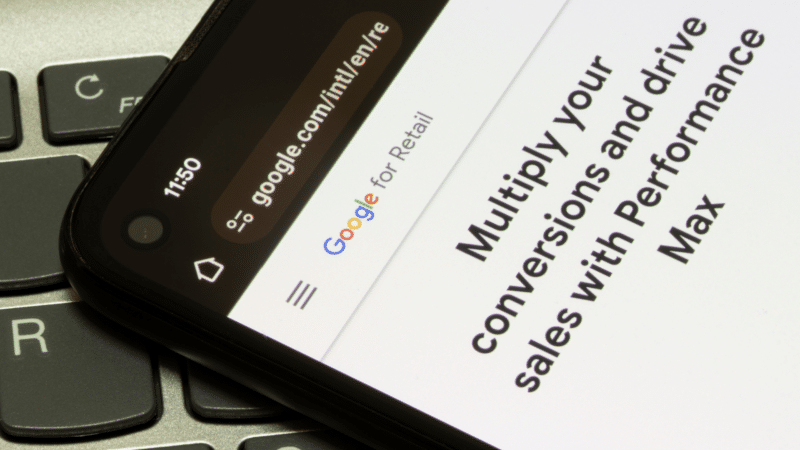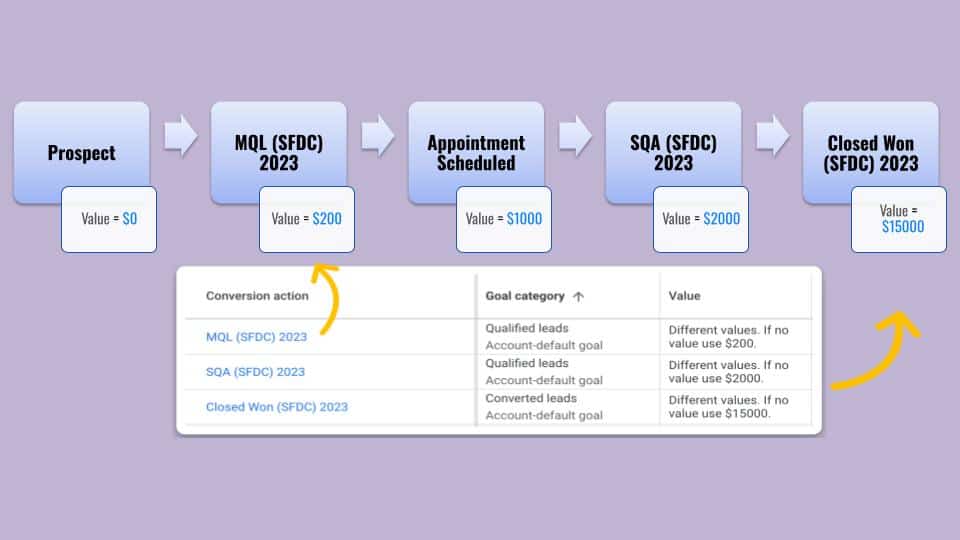How to use Performance Max for any type of business

Performance Max is a versatile campaign, but understanding the nuances and adapting it to the account you’re working on can be the difference between investing budget and burning it.
One significant reason is that the quality and intent of traffic from Performance Max can vary considerably based on how you configure it. This will depend on your choices around retargeting, new customer bidding and segmentation with other campaigns like Search or Shopping.
In this guide, I’ll walk you through the different approaches to Performance Max:
- Three ways you can set it up.
- How to use it for different types of ecommerce brands.
- How to use it with lead generation businesses with differing budgets.
- Why it’s the only way to access local ads.
Performance Max can be a different beast depending on how you set it up and how much data you feed it, but there are three general approaches:
- The full-funnel version (or Performance Max as intended by Google) covers all inventory types and uses the full range of creative assets, audience signals and data feeds. This can be used for ecommerce, private label brands, retailers, lead generation and multitudes of products and services.
- The “Smart Shopping” style only uses the product feed by disabling or turning off all creative assets. When creating a new asset group, all fields must be empty: headlines, descriptions, images, videos, logo, business name, etc. The CTA must be set to automatic. You’ll also want to turn off URL expansion to prevent the system from choosing an alternate page to send traffic. Also, consider excluding your brand name to force the algorithm to focus on searches from net new users who don’t already have you in mind.
- The “social style” campaign emphasizes creative assets with strong audience signals, first-party data and customer lists. Accounts with large budgets can use this to grow reach and awareness.
Now let’s look at the nuances of the different types of ad accounts that might use one or more of these Performance Max setups.
Performance Max for ecommercePerformance Max and ecommerce seem to be made for each other; it’s certainly the best use case we have today for Google’s machine-driven campaign.
However, many ecommerce advertisers continue to make fundamental errors that impede success such as:
- Treating audiences and audience signals like they work the same way.
- Forgetting to optimize or keep their product feed up to standard.
- Structuring their campaigns poorly, such as too many or too few asset groups.
- Ignoring the potential to run Shopping campaigns alongside Performance Max.
- Accepting auto-apply recommendations from Google without knowing what they do.
- Not optimizing assets and asset groups to each win the right traffic.
- Using the wrong bid strategy at the wrong time.
Fortunately, these are all fixable. If you struggle with any of these, learn how to solve seven mistakes that tank retail Performance Max campaigns.
DTC ecommerceFor direct-to-consumer ecommerce brands, Meta is still the holy grail of advertising channels. It’s tough to argue with that position, given how many brands have scaled on the back of growth programs centered around Facebook and Instagram ad campaigns.
But no channel is immune to challenges like volatility, saturation and reliability. This is why I recommend that ecommerce advertisers test out Google Ads, even if they want to remain Meta-first.
When it comes to Performance Max, these brands have a couple of traits that are relevant:
- They generally have relatively fewer SKUs, often in the single digits or a few dozen.
- Products are closely related (i.e., brands won’t sell a popcorn maker or makeup).
- All these products are clustered under a single brand.
- Very often, these are invented/formulated products rather than branded commodities.
These all impact decisions around how many campaigns you need, how to structure each one and what work you need to do on your feed, creatives and landing pages.
With all of those in place, you’ll want to make sure your product feed is in order, that you use captivating product imagery and that you build a post-click experience that excites people enough to convert.
Retail ecommerceOne key distinction between DTC and retail ecommerce is that the latter generally advertise a larger number of SKUs across multiple brands. Within this segment, I see two clear distinctions:
- There is the mass retailer with hundreds or thousands of commoditized products from dozens or hundreds of brands. This advertiser is almost always going to want to do either Smart Shopping-style Performance Max or Shopping, very rarely opting for creative or audience signals.
- Then you have what’s called private label brands. These advertisers sell their own line of products like fashion apparel, generally with fewer SKUs than mass retail. Private labels also sell products that typically do well with ads on Meta and YouTube, so Performance Max can lean into that.
For both, Performance Max can send very different types of traffic to their website or landing page. Much of the quality will be determined by how the campaign is structured, including bid strategies and whether the account uses brand exclusions to ensure incrementality.
Teaser of an analysis for bid strategies in Performance Max ecommerce campaigns. Click like and I'll either tag you or DM you when the research drops next week.
95% of PMax advertisers are using max conv. val
Any guesses how many are setting an efficiency target?#ppcchat pic.twitter.com/sH6vI4HpKc
I spoke to one advertiser who shared an audit of his Google Ads account, saying that he paused Google Ads and overall revenue was not impacted at all.
I can see why in that audit.
The campaign simply brought back people who were already going to purchase from him (i.e., a lot of branded and retargeting traffic). But you can set up Performance Max to focus on net new customers and new business.
Get the daily newsletter search marketers rely on.
Business email address Subscribe Processing... Performance Max for lead generationWhat exactly makes Performance Max such a hassle for lead-generation accounts? Aside from the variety of inventory these campaigns can serve, the biggest challenge is the actual nature of lead generation.
In ecommerce, a purchase actually is the conversion.
The creation of a lead, however, is just the start. Just because you get a conversion from a form doesn’t mean you’ve made the sale or that they’re even qualified to sell to.
This is why offline conversions are critical: You can train Performance Max on which “conversions” became sales or at least got close to contributing revenue. Without that, you’re letting Google optimize future leads based on that limited window of data.
Low-budget lead generationRunning ads for a service or lead-based business is difficult enough. When that account is new or limited by budget, competing against high-spending accounts with plenty of historical data makes it even tougher to crack the code.
If your business or client is new to Google Ads or has a modest budget, that’s when they need more support and calculated decision-making.
With just a few hundred or thousand dollars in budget, the pressure is on for everything to be dialed in and working well. The truth is that in this scenario, Performance Max is probably not your best friend.
We've had some success on lead gen with PMax, and verified the quality with lead tracking. Many times the traffic is garbage, but we've had a few clients that get a good number of leads from PMax that are quality.
— Mark Subel (@marksubel) May 30, 2024Because Performance Max is driven by machine learning, a new account with no historical data – or one that doesn’t spend enough to gather enough of it – is better off running a traditional Search campaign.
Additional reading:
- If your account is still young, I suggest reviewing the suggestions in my guide on paid search for new accounts.
- Or if you’re ready to scale that account, there’s a guide for that as well.
If you’ve got the budget to tolerate some of Performance Max’s issues and lower-quality placements, there are also ways of making it work for lead generation.
The most important prerequisites for this are:
- Implementing some type of spam protection, like a reCAPTCHA for form submissions or a qualifying script for call conversions. Performance Max has a very real issue with spam traffic, so you’ll want measures in place to minimize this.
- Setting up offline conversion tracking by connecting your CRM or other customer database to Google Ads, either natively (for Salesforce or HubSpot) or through Zapier. This feeds the post-conversion sales data back to Google, using the hashed Google Click ID (GCLID) to tell the system which leads were most valuable.
Check out this detailed guide on how to set up these protective measures for lead-generation Performance Max.
You might also want to consider implementing a value-based bidding strategy, where you assign pipeline stages different values based on what each CRM deal stage is worth to your business.
Google is then able to find more leads in the future who share the data points that it determines your revenue-generating conversions have in common (this is also done using the GCLID as an identifier).
Here’s an example of how that looks for a Salesforce-connected account progressing from prospect to closed-won. You can see that an appointment being scheduled makes a lead five times more valuable than the previous stage, while a closed-won deal is 15 times more valuable.
This approach to lead valuation tells Google to find more people who are likely to progress further down this path, improving your overall conversion rate and limiting how many low-quality leads clog the pipeline.
 Performance Max for local businesses
Performance Max for local businesses
In 2022, Performance Max absorbed local campaigns.
For businesses that make sales from physical locations but advertise on Google, Performance Max is the primary way to access these features that include paid placements on Google Maps, Display, Search, YouTube and other inventory.
5⃣ Can I run Performance Max for a local business?
Yes. Local campaigns were rolled into PMax, so if you want to advertise on Maps, you’ll have to use it.
Turn off Location Expansion in campaign settings. I recommend setting target areas to within a 30- or 45-minute drive.

